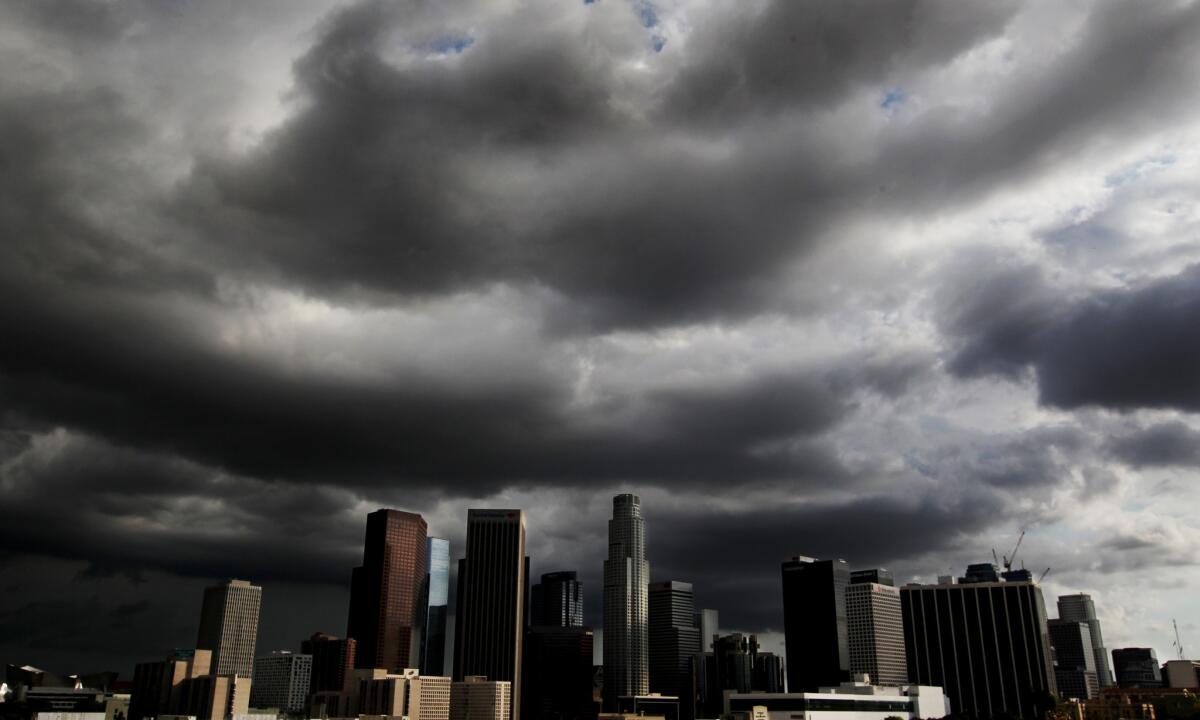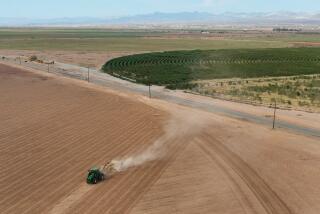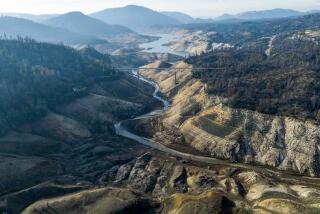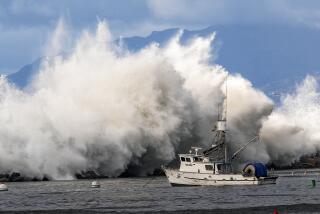‘All hands on deck’ needed for El Niño preparations, officials say

Storm clouds drift over downtown Los Angeles.
With the looming threat from El Niño’s heavy rains approaching, state and federal officials Wednesday emphasized the public’s role in helping prepare for what could be a record-setting wet winter.
“This is not a government solution, but a public-private, all-hands-on-deck solution,” said Bob Fenton, administrator for the Federal Emergency Management Administration’s Southwestern district. “It’s important for Californians to take this seriously and understand during these conditions that having a plan [and] supplies is important.”
Fenton spoke during a press conference at the California Governor’s Office of Emergency Services, in Mather.
NEWSLETTER: Get essential California headlines delivered daily >>
El Niño is a warming of the ocean along the equator west of Peru, which triggers changes in the atmosphere that can dramatically alter weather patterns across the world. The system has already triggered excess rain in Texas and Florida and unusually high temperatures in the Great Plains, experts say.
“These are classic El Niño signals we’re starting to see as we get into our winter, wettest months,” said Todd Morris of the National Oceanic Atmospheric Administration. “Certainly we’re looking at the potential for one of the strongest El Niños in recorded history.”
This year’s El Niño could be stronger than ones in 1997-98 and 1982-83 and will drench the West Coast from January to March, experts say. It’s expected to bring rain to California, Arizona and Nevada, among other areas.
Yet it’s the Golden State’s geography that magnifies El Niño’s effects, Fenton said.
Coastal counties will have to plan for potential hazards from high tides combined with strong winds and heavy rain, which could flood beachside homes and businesses.
In the Central Valley, some levees are expected to be overwhelmed when the rain fills the Sacramento and San Joaquin rivers.
In the mountains, meanwhile, communities will have to prepare for possible mud flows and flash floods.
FEMA officials suggested that residents buy flood insurance if they’re in a vulnerable area, learn where their city provides sandbags and buy supplies in case of a power outage.
“It is critical that individual citizens take their roles seriously,” Fenton said.
In the meantime, local, state and federal agencies are streamlining communications and planning for regional responses to disasters. Some infrastructure, including bridges in the Inland Empire and levees in the Central Valley, will likely fail during the storms, officials said.
FULL COVERAGE: Preparing for El Niño
Then there’s the fact that the heavy rain is coming on the tail-end of a four-year drought. Soil from Northern California to San Diego is parched and dusty. If it rains too hard and fast, little of the water is absorbed into the earth and instead transforms into a river that can wash trash, debris and branches into flood channels and gutters, clogging them.
“It’s kind of a good news, bad news sort of scenario” for the drought, Fenton said.
The public can learn about particular communities’ flood vulnerability at floodsmart.gov. Tips on preparing for El Niño can be found at ready.gov.
For breaking California news, follow @JosephSerna.
MORE ON EL NINO
El Niño ‘is here, and it is huge,’ as officials race to prep for winter
Massive El Niño gains strength, likely to drench key California drought zone
L.A. considers suspending trash pickup when heavy rainfall is forecast







